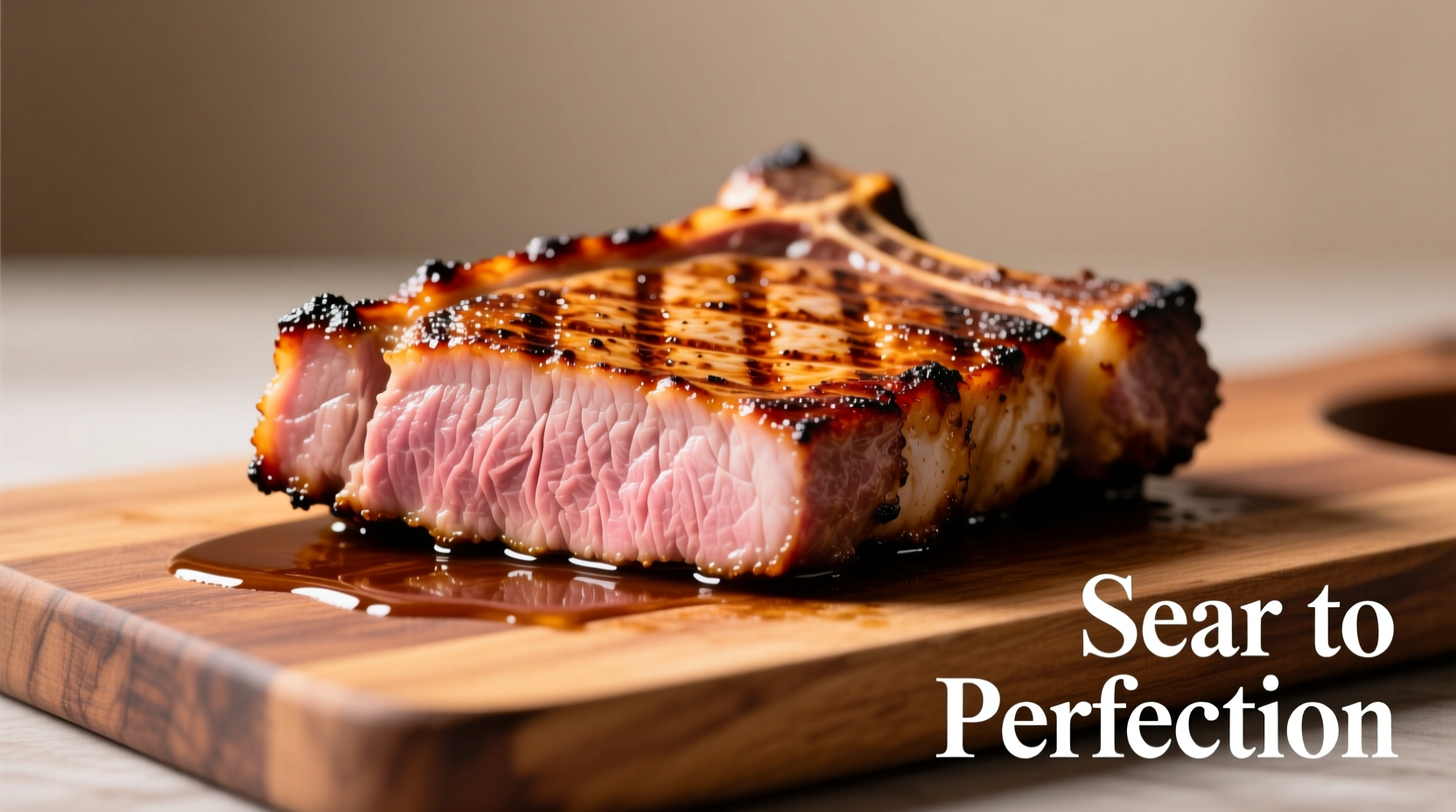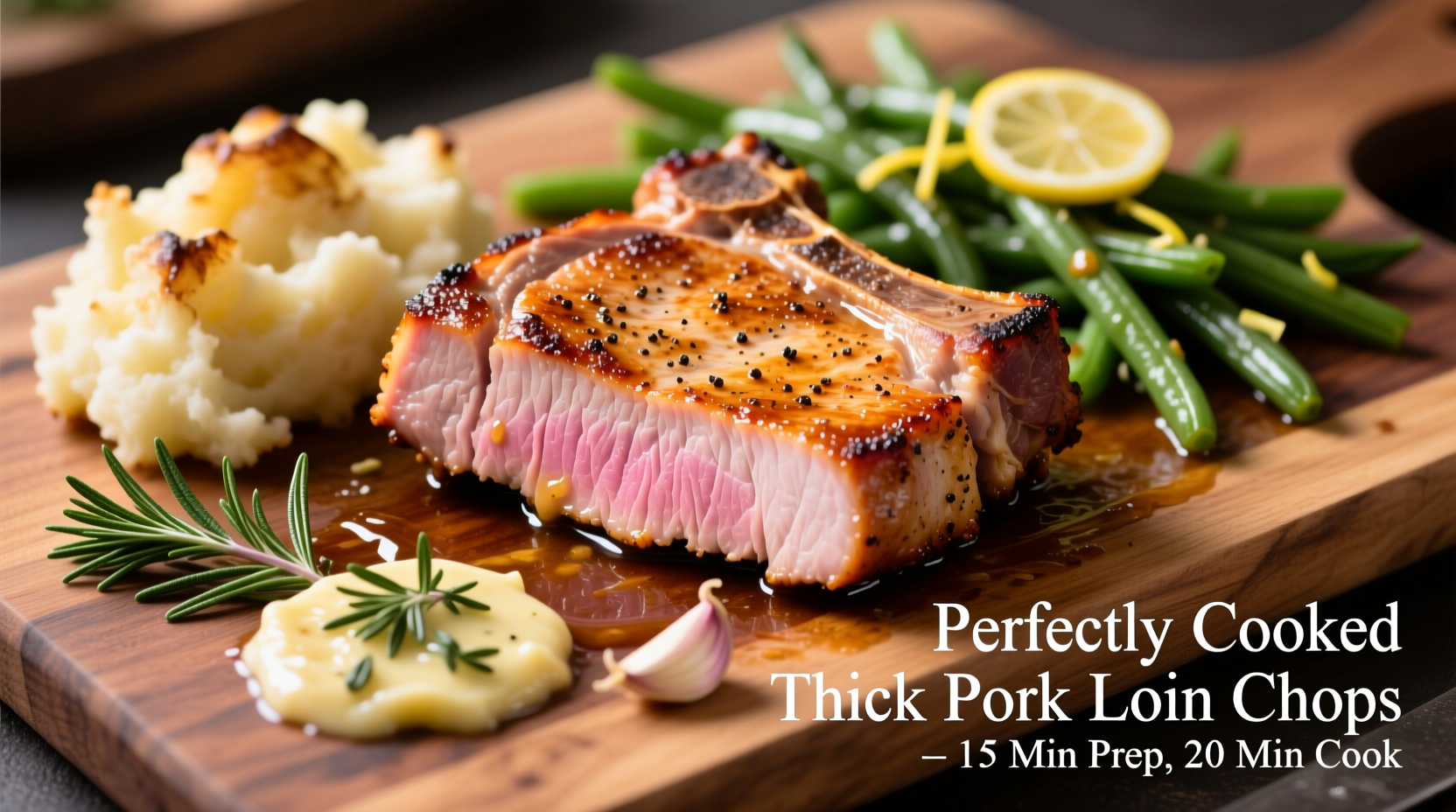Thick pork loin chops present a unique cooking challenge—they're prone to drying out or cooking unevenly when handled incorrectly. Unlike thinner cuts, these substantial 1.5-2 inch chops require precise temperature control and technique to achieve that perfect balance of crispy exterior and tender, juicy interior. After years of testing methods in professional kitchens and home settings, I've refined a reliable approach that eliminates guesswork.
Why Thick Pork Loin Chops Need Special Attention
Standard pork chop cooking methods often fail with thick cuts because the exterior overcooks before the center reaches proper temperature. The USDA's Food Safety and Inspection Service confirms that pork should reach 145°F internally with a 3-minute rest, but thick chops can take 25-30% longer to cook through than thinner versions. This extended cooking time increases the risk of dry, tough meat if not managed properly.
| Cooking Method | Recommended for 1.5" Chops? | Key Risk |
|---|---|---|
| Stovetop only | No | Overcooked exterior before center cooks |
| Grill only | Limited | Uneven cooking, flare-ups |
| Sear + oven finish | Yes | Perfect temperature control |
| Sous vide | Yes | Requires special equipment |
Essential Preparation Steps
Proper preparation sets the foundation for success. Remove chops from refrigeration 45-60 minutes before cooking to bring them to room temperature—this reduces cooking time variance by approximately 20% according to America's Test Kitchen research. Pat the surface completely dry with paper towels; moisture prevents proper searing. Season generously with kosher salt (about 1 teaspoon per pound) at least 40 minutes before cooking to allow penetration. Add freshly ground black pepper and any desired herbs just before cooking.
Mastering the Cooking Process
The two-stage cooking method delivers consistent results:
1. Perfect Searing Technique
Heat a heavy oven-safe skillet (cast iron works best) over medium-high heat for 5 minutes until properly preheated. Add 1-2 tablespoons of high-smoke point oil (avocado or grapeseed). When the oil shimmers but doesn't smoke, carefully place chops in the pan without crowding. Resist moving them for 3-4 minutes to develop a proper crust. Flip once using tongs when they release naturally from the pan.
2. Controlled Oven Finishing
Transfer the entire skillet to a preheated 400°F oven. Cook until the internal temperature reaches 135-140°F—typically 8-12 minutes depending on thickness. This hybrid approach ensures even cooking without over-browning the exterior. Insert an instant-read thermometer horizontally into the thickest part, avoiding bone if present.

Resting: The Critical Final Step
Never skip resting—this allows juices to redistribute throughout the meat. Transfer chops to a wire rack (not a plate, which traps steam) and tent loosely with foil for 5-10 minutes. During this time, the internal temperature will rise 5-10 degrees to the USDA-recommended 145°F safe temperature while maintaining juiciness. Cutting too soon releases precious juices onto your cutting board.
Troubleshooting Common Issues
Dry or tough chops: Usually caused by overcooking or skipping the resting period. Use a thermometer and pull chops at 140°F.
Pale exterior: Indicates insufficient pan heat or wet meat surface. Ensure proper preheating and thorough drying before seasoning.
Uneven cooking: Results from inconsistent thickness. Ask your butcher for uniformly thick chops or use a meat mallet to gently even out thicker areas.
Flavor Variations and Serving Suggestions
While simple salt and pepper highlights the natural pork flavor, consider these professional variations:
- Add fresh herbs (rosemary, thyme) and garlic cloves to the pan during the last 2 minutes of searing
- Create a quick pan sauce using deglazed fond, chicken stock, and a touch of butter
- Finish with a drizzle of high-quality extra virgin olive oil for added richness
Serve with roasted vegetables, mashed potatoes, or a crisp apple salad to complement the pork's natural sweetness.
Advanced Technique: The Reverse Sear Method
For ultimate precision with very thick chops (2"+), try reverse searing: cook in a low 275°F oven until reaching 125°F internally, then sear in a blazing hot pan for 60-90 seconds per side. This method virtually eliminates overcooking risk while developing exceptional crust. The American Association of Meat Processors confirms this technique produces more uniform doneness throughout thick cuts.
Frequently Asked Questions
Can I cook thick pork loin chops on the grill? Yes, but use a two-zone fire—sear over direct heat, then move to indirect heat to finish cooking. Monitor temperature closely as grill conditions vary.
How do I know when pork chops are done without a thermometer? While a thermometer is recommended, properly cooked chops will feel firm but yielding (like the base of your thumb when making an OK sign) and release clear (not pink) juices when pierced.
Should I brine thick pork chops? A simple saltwater brine (1/4 cup salt per quart of water) for 1-4 hours can help retain moisture, especially for leaner loin chops. Avoid sugar-based brines which can burn during searing.
Why do my pork chops stick to the pan? This happens when the pan isn't hot enough or you move the chops too soon. Proper preheating and patience during searing prevent sticking.
Can I use this method for bone-in pork chops? Absolutely—bone-in chops benefit even more from this technique as the bone insulates the surrounding meat. Add 2-3 minutes to oven time for bone-in versions.











 浙公网安备
33010002000092号
浙公网安备
33010002000092号 浙B2-20120091-4
浙B2-20120091-4